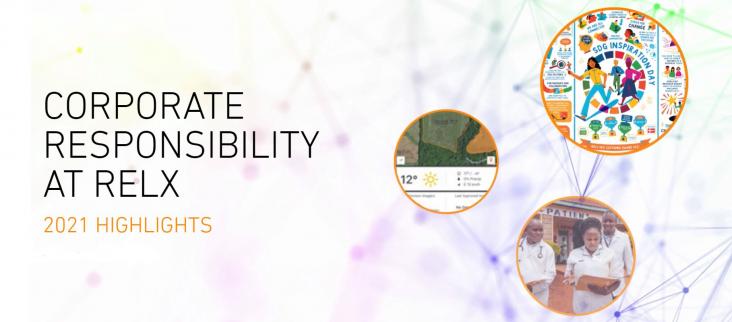
In 2021, RELX continued to build on our strong corporate responsibility (CR) performance during the year, further improving on our key internal metrics and extending the scope of our unique contributions. This article is linked to SDGs 1,3,10,11,12,13 and 16, in line with RELX's areas of expertise.

This article supports SDGs 7,9 and 11 by proposing that the real-time online analysis, data integration, and prediction of future status, monitoring, decision-making, and self-healing of the power grid can be achieved, providing high security, reducing the risk of power grid accidents, and serving multiple fields of producers, consumers, and the entire country.
In this article, the authors used an Energy Transition Index to characterize the city-level energy transitions from energy system performance and transition readiness dimensions for 282 cities in China. They estimate that China’s energy and carbon intensity could decrease by 34% and 32%, respectively, and that carbon per capita could fall by 17% if each city modestly follows the sustainable development path forged by the best performing cities with similar economic structures.
This article supports SDGs 13, 15 and SDG 11 by exploring the utilization of soil microbe based desertification management practices and highlighting emerging technologies in the field. It discusses the policy implications and strategies that can support
This article advances SDG # 3, 5, 7, 10, 11, and 13 by measuring the strong relationship between air pollution and adverse pregnancy outcomes including low birth weight and preterm birth. It shows that fossil-fuel based pollution has serious health consequences, mitigation of which could have immediate health benefits, particularly in high-pollution environments. T
This article supports SDGs 11, 6, and 13 by analyzing the impact of Denver Water's annual energy use and water use alongside local precipitation over a 20-year period from 1995 to 2014 and highlighting the implications for altered energy footprints as water utilities respond to new precipitation patterns in a changing climate.
Electromobility is the future main system for Swedish road transport that encourage sustainable urban transportation. However, emission impacts of applying electric vehicles (EVs) are currently controversial. This study evaluates and compares internal combustion engine vehicles (ICEVs) refer to both petrol and diesel-based engines and BEVs, focusing on environmental and energy impacts.
Green technologies (e.g., green preservation, processing, extraction, and analysis) and Industry 4.0 (e.g., artificial intelligence, big data, smart sensors, robotics, blockchain, and the Internet of Things) technologies rapidly becoming a valuable part of meeting the Sustainable Development Goals (SDGs)over the past decade. These technologies demonstrate high potential to foster ecological and digital transitions of food systems, delivering societal, economic, and environmental outcomes. While a range of green technologies has already provided innovative solutions for major food system transformations, the application of digital and other Industry 4.0 technological innovations is yet to be adopted to harness their full potential to achieve a healthier, smart, more sustainable, and more resilient food future.
The study concludes that power outages disproportionately impact urbanized areas and highlights the intersectionality of health risks and urban resilience, pertinent to both Sustainable Development Goal 3 (Good Health and Well-being) and SDG 11 (Sustainable Cities and Communities).
Using Health personal protective equipment (PPE) such as face masks, safety foot shoes and protective suits has expanded dramatically due to COVID-19 pandemic leading to a widespread distribution of t
